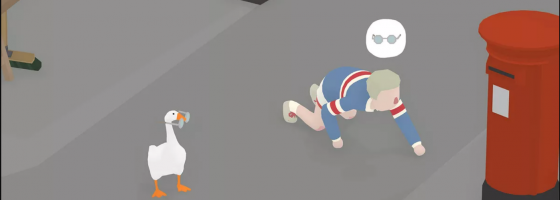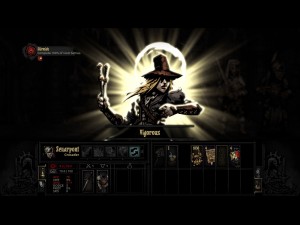This year saw the release of two games: Wargroove and Fell Seal: Arbiter’s Mark that were designed to emulate the classic games of Advance Wars and Final Fantasy Tactics respectively. I had a chance to play both, and in both cases I stopped caring about them within less than an hour of playing. Now, you may think that’s because I had major problems with them or hated the gameplay, but it was because they were just okay, and as we’re about to talk about, being okay isn’t enough anymore.
The Quality of Indie Games
We’ve spoken about this point many times before: the quality out of the indie space has grown exponentially over this decade. When people look at indie games today, they’re not seeing “bargain bin” titles anymore, but amazing games that can stand next to those from major studios. Studios like Klei Entertainment, Kitfox Games, among others, have consistently put out great games. Not to mention the sheer number of unique games being released each year — such as Dead Cells, Slay the Spire, and Disco Elyisum.
This has led to a very healthy market for indie games, but it has come at a cost. The days where just making a basic game and being on Steam was enough will not even earn you a quick glance from consumers anymore. And that takes me to the games mentioned at the top, both titles were not done “quick and dirty,” but their teams put in a lot of work to making them, so why didn’t they work for me?
Iterating, not Emulating
One of the easiest ways to start a game project is to say, “I really want to make X,” and that phrase has been the impetus for many indie titles released this decade. Platformers, roguelikes, horror, RPGs, and so on, all began thanks to that passion.
Many indie games began as tributes to genres or game series either no longer being made or not made for the PC; such as Wargroove and Fell Seal again. While there is nothing wrong with that, I’ve noticed a trend that has begun to turn me off numerous indie games.
For some developers, the goal of their project is to emulate the design and success of another title. Obviously, if you’re aiming at a specific market, then you want your game to be similar in design, but that should be part of the development process and not the end goal.
With previous mega-hits from the indie space, I’ve seen games that tried to be the next FTL, Darkest Dungeon, Undertale, and so on, but that raises one question — Why should I play your game, when I still have those games?
In the past, I’ve talked about the success of Darkest Dungeon as a standout in the indie market, but for today, we’re going to talk about how many people missed the point of another game.
Stardew’s Success
Stardew Valley is a prime example of indie passion leading to success. The game was in development for over four years and has received several more in post-release support. The game was undeniably inspired by the Harvest Moon series that never came to the PC and have disappeared on consoles.
From the outside, a cursory glance would lead you to think that the game succeeded just because of the developer recreating Harvest Moon on the PC. Digging deeper, and there is a lot more going on in terms of the gameplay loop.
Stardew Valley is more open-ended compared to Harvest Moon; with more systems when it comes to farming and earning money. The game’s combat system and dungeons are wholly unique from Harvest Moon (and was most likely inspired by the spin-off Rune Factory). Even the progression curve of leveling up and unlocking new tools and functions was a different take compared to Harvest Moon.
Again, you can see that Eric was inspired by games that came before it, but just recreating Harvest Moon wasn’t his goal, but to exceed it and go in a different direction.
The many imitators that have come out to try and copy Stardew Valley all fail to grow beyond Valley’s design in meaningful ways. As a big example, I’m still waiting on someone to do more with the management of the crops and earning money gameplay loop. I’ve used this analogy before, but it’s akin to a student copying someone else’s homework without understanding the fundamentals.
Now, before you think this topic only applies to Indie games, I’ve been feeling the same thing about the AAA space as well.
The AAA Machine
Each year, I pick up what many consider to be one of the best games on the console side and end up ultimately being disappointed by it. Horizon Zero Dawn, God of War, and Marvel’s Spiderman, all disappointed me in terms of their design.
They all look spectacular, earned numerous awards, but they all follow the same predictable patterns in terms of their gameplay loop. Instead of making the moment to moment gameplay stand out, there is a greater focus on padding out the experience and on macro elements instead of micro.
There is no real evolution of the basic mechanics outside of the opening area, and then using side quests and leveling up to have a pseudo RPG layer. At this point, I can predict the beats of how the game plays out before they’re introduced.
Again, I’m not saying these games are bad, but to me, they’re just average experiences with the AAA sheen and polish thrown in.
Thinking Beyond
As we enter the next decade and await the next console cycle, I’m sure, as always, that the market will change in some way. For the many developers who are beginning their careers in the industry, it’s important to not look at past successes as the defacto way of designing videogames.
Some of the most memorable and highest-rated games we’ve seen have gone in different directions — standing out thanks to a unique story or doing something different with its gameplay, like Untitled Goose Game. The days where you could release another pong or breakout clone, and expect to make even a $1, are long gone.
Thanks for reading, if you like to talk game design, be sure to check out the Game-Wisdom discord channel.




